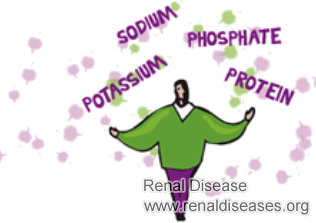Whatsapp: +8615512139310
- Email us:
 Renal Diets are the most concerned question among patients with kidney disease, including Lupus Nephritis patients. In fact, diet therapy plays a significant role in treatment of lupus nephritis. Now, lets’ see the LN patients on renal diet.
Renal Diets are the most concerned question among patients with kidney disease, including Lupus Nephritis patients. In fact, diet therapy plays a significant role in treatment of lupus nephritis. Now, lets’ see the LN patients on renal diet.
The kidney expert from Shijiazhuang Hetaiheng Hospital point out: a real kidney-friendly diet should be individualized. That’s to say, each patient may have different dietary requirements after all illness conditions are different from person to person. Therefore, if you’d like to wanna the individualized suggestions, you can email to us at renal-disease@hotmail.com or leave a message below directly.
Here are some general suggestions for your reference. You can choose available suggestions according to your illness conditions.
Eat more high-quality protein
Lupus Nephritis patients with kidney damage will have massive protein leaking into urine, which will cause hypoproteinemia. Under this condition, patients should supplement some high protein foods to maintain the protein balance. The high quality protein foods refer to animal protein, including eggs, duck, fish, lean meat, milk and bean products, etc.
Eat less salty food
Patients should have a light diet for protecting remaining renal function. Salt is rich in sodium which will cause retention of sodium and fluid in the body. It not only trigger swelling, but also aggravate high blood pressure. For this reason, patients need to stay far away from high sodium foods and try to add less salt while cooking.
Take enough vitamins
Lupus Nephritis patients should eat fruits and vegetables with rich vitamin, so as to strengthen immune system. Meanwhile, patients should also eat a low sodium, low fat and low sugar diet, so as to reduce kidney’s burden.
Drink proper amount of fluid
Since the impaired kidneys cannot filter extra water from the body that the excess water is prone to suffer from fluid-retention, inducing swelling. Therefore, it is important to regulate daily fluid intake according to patients’ illness conditions.